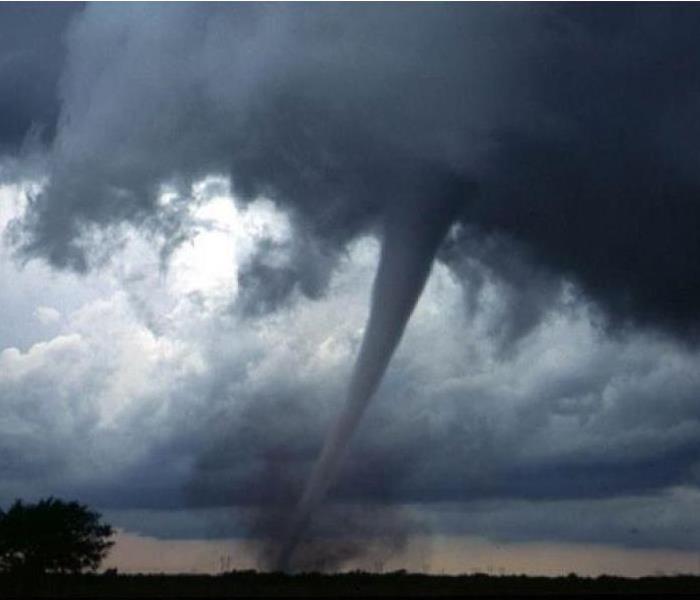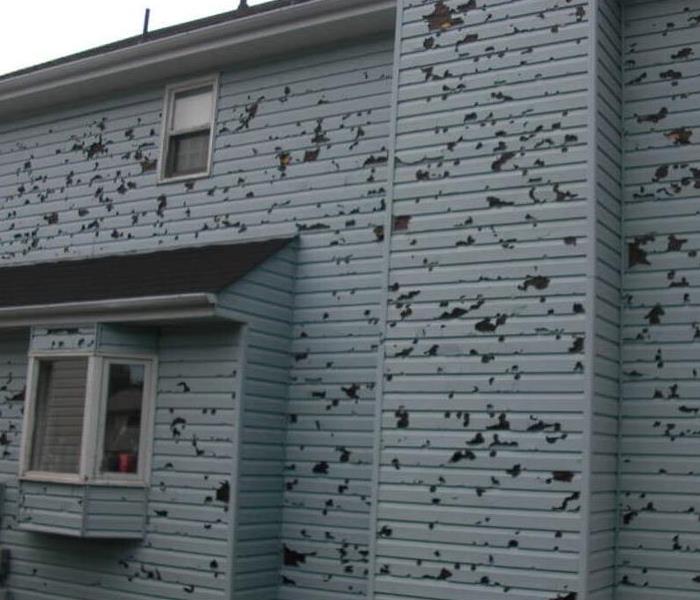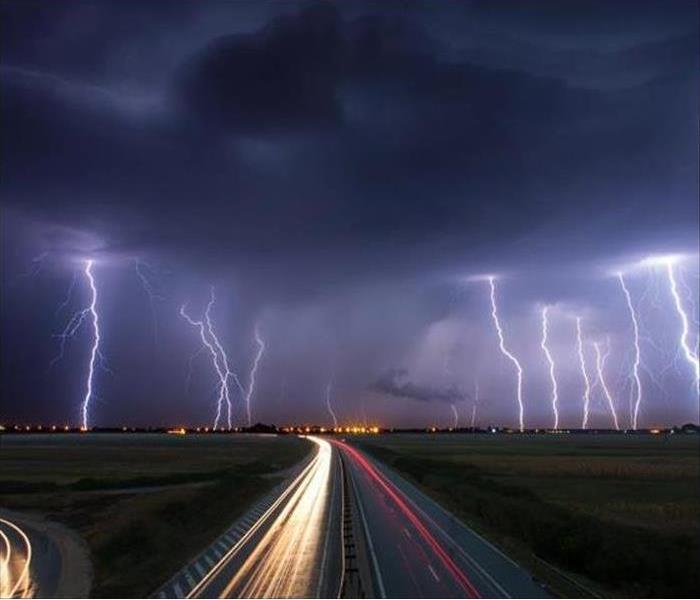Archived Storm Damage Blog Posts
Is your house prepared for Freezing Temps
3/6/2023 (Permalink)
Recently numerous areas of the United Stated experienced freezing temps that they are not prone to seeing. In Nashville, TN temps around the holidays dipped into the single digits and some below zero. In an area that is not prepared for this it can cause widespread damage and a lot of it. Even if you are in a region that is prepared for freezing temps that normally occur, if your home or insulation are not prepared for it, it can also cause widespread damage. Most recently SERVPRO of Mt Pleasant, Clare and Houghton Lake helped home and business owners in the NE portion of the nation with a freeze even though they had. Prolonged freezing temps cause pipes to break and cause flooding throughout many residences and businesses.
As soon as SERVPRO of Mt Pleasant, Clare and Houghton Lake got the ask to help, we dispatched teams and were heading out to help. Crews work extended hours to get wet affected material out of homes and businesses to get the residents back to their everyday life.
Hurricane Season
6/1/2021 (Permalink)
Today, June 1st, marks the first day of Hurricane Season and extends through November 30th. Experts predict in 2021 there could be 13-20 storms that will be named ( winds of 39mph and higher) and of those, 6-10 could be named Hurricanes and 3-5 major Hurricanes.
Predictions this year will be that warmer then avg surface temperatures and weaker tropical Atlantic trades winds will help fuel more storms this year.
In 2020 SERVPRO of Mt Pleasant, Clare and Houghton Lake jumped into action to help in two States , Pennsylvania and Louisiana, for three Hurricanes.
This is the time to start preparing for residents along the coast as we come into Hurricane Season and here at SERVPRO of Mt. Pleasant, Clare, and Houghton Lake we are always prepared to go where we are needed in a moment's notice.
Hurricane Florence hits Topsail Island
4/30/2019 (Permalink)
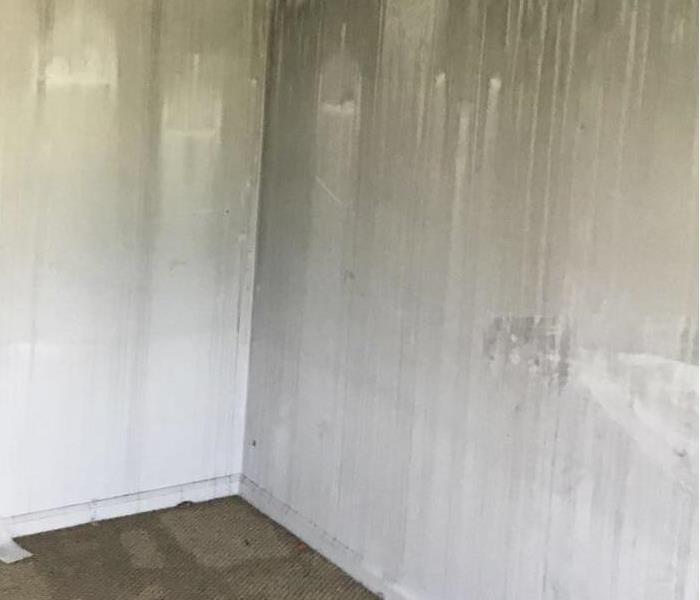 Walls destroyed by hurricane Florence
Walls destroyed by hurricane Florence
SERVPRO of MountPleasant, Clare & Houghton Lake specializes in storm and flood damage restoration. Our crews are highly trained and we use specialized equipment to restore your property to its pre-storm condition.
Faster Response
Since we are locally owned and operated, we are able to respond quicker with the right resources, which is extremely important. A fast response lessens the damage, limits further damage, and reduces the restoration cost.
Resources to Handle Floods and Storms
When storms hit Topsail Island, we can scale our resources to handle a large storm or flooding disaster. We can access equipment and personnel from a network of 1,950 Franchises across the country and elite Disaster Recovery Teams https://www.SERVPROmountpleasantclarehoughtonlake.com/storm-flooding-restoration that are strategically located throughout the United States.
Have Storm or Flood Damage? Call Us Today
989-775-5065
TURN AROUND,DON'T DROWN
4/23/2018 (Permalink)
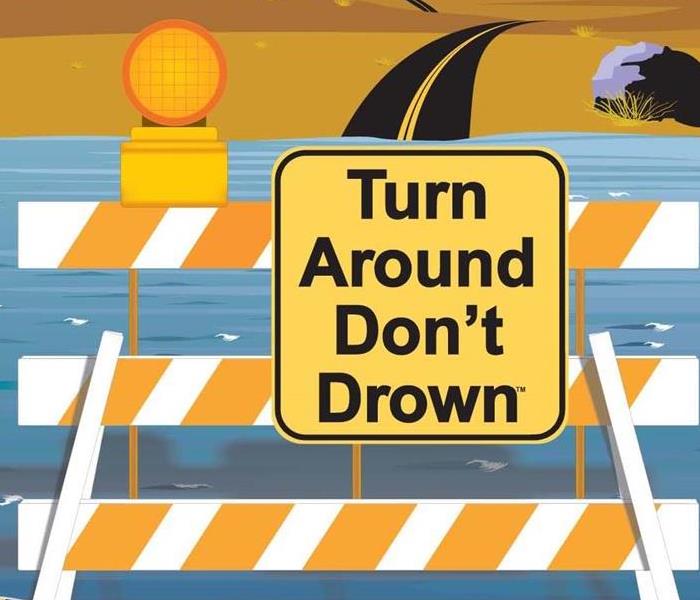 Road construction and flooding.
Road construction and flooding.
Inland Flooding
Inland flooding is the leading weather-related cause of death in the United States. Every year, almost as many people die from flooding as from hurricanes, tornadoes and lightning combined. Most flood-related deaths and injuries could be avoided if people who come upon areas covered with water followed this simple advice:
TURN AROUND, DON’T DROWN.
Inland flooding usually occurs during or after a heavy, slow-moving rain storm. But it also can result from strong coastal storms. Severe inland flooding can occur in areas that are hundreds of miles from the eye of a hurricane.
The reason that so many people drown during flooding is because few of them realize the incredible power of water. A mere six inches of fast-moving flood water can knock over an adult. It takes only two feet of rushing water to carry away a vehicle. This includes pickups and SUVs.
If you come to an area that is covered with water, you will not know the depth of the water or the condition of the ground under the water. This is especially true during the dark, when your vision is more limited.
Play it smart, play it safe. Whether driving or walking, any time you come to a flooded road, TURN AROUND DON'T DROWN!
Flash Floods
Inland flooding that leads to drowning usually occurs during flash-flood conditions.
Flash floods are those that develop within six hours of a rain storm. That may sound like a lot of time, but severe flash floods can occur in a matter of minutes, depending on the intensity and duration of the rain, the topography of an area, and the condition of the soil and ground cover.
Nearly half of all flash-flood fatalities are vehicle-related. The majority of victims are males, but flood deaths affect people of both sexes and all age groups.
Anyone who has witnessed a flash flood can testify to the devastating power of fast-rushing water. Flash floods can roll boulders, uproot trees, destroy buildings and bridges, carry away vehicles and create deep new channels in the earth. Rapidly rising water can reach heights of 30 feet or more. Rain storms that trigger flash floods can also cause catastrophic mud slides.
PREPARE FOR A FLOOD DISASTER IN ADVANCE
We may not be able to control weather conditions, but with only a little bit of planning, we can take all possible precautions to ensure our personal safety and protect our homes from severe damage. Here are some measures you can take to safeguard your home and family:
- Find out how vulnerable your home is to flooding by determining the elevation of your property.
- Evaluate your insurance coverage once a year to make sure your home is fully covered. As new construction grows in certain areas, more flood-plains are sometimes created.
- If your home is in a flood-prone area, contact the National Flood Insurance program to learn what mitigation measures you can take in advance.
- Contact your local emergency management agency to learn how to construct proper protective measures around your home.
- If you live in a flood-prone area, keep these materials on hand: sandbags, plywood, lumber, plastic sheeting, trash bags, shovels, work boots and gloves.
- Purchase a weather radio. These special, battery-operated radios cost as little as $20 and are available at many hardware and appliance stores and other retail outlets.
- Put together a disaster survival kit. Keep the following supplies near at hand and put them in a water-tight container: flashlight with extra batteries, battery-powered radio and weather radio, first aid kit, medicines, eyeglasses, drinking water, non-perishable foods, change of clothes, cash and credit cards, and copies of all important papers.
- Plan two evacuation routes in advance. Don’t wait until threatening weather conditions occur before trying to determine your route to safety. Be aware of streams, drainage channels and low areas in your region that are prone to flooding, so that your evacuation routes are not cut off.
- Do not park your vehicle near streams or rivers, especially during threatening weather conditions.
IF FLOODING OCCURS
Any time there is heavy rain in your area, be sure to follow these simple safety rules:- Listen to NOAA Weather Radio for current and forecasted conditions in your area.
- If flooding begins in your area, go to higher ground immediately.
- When driving, always be aware that the road bed under flood waters may be severely damaged. NEVER drive through flooded roadways. Remember that it takes only two feet of water to carry away a vehicle, including pickups and SUVs.
- When walking, do not attempt to cross flowing streams. Remember that it takes only six inches of rushing water to knock an adult off his feet.
- If your vehicle stalls, get out immediately and go to higher ground.
- Be extra cautious at night, when it is harder to see possible flood dangers.
- These four words could save your life: TURN AROUND, DON’T DROWN.
Hudgens said that after a flood sweeps through your community, keep yourself and your family safe:- Clean and disinfect everything that got wet. Floodwaters pick up sewage and chemicals from roads, farms, factories and storage buildings. Spoiled food, flooded cosmetics and medicines are health hazards. When in doubt, throw them out.
- Soaked carpeting and padding should be pulled up and discarded.
- Look before you step. After a flood, the ground and floors are covered with debris including broken bottles and nails. Floors and stairs that have been covered with mud can be very slippery.
- The use of large fans can speed the drying process and curtail the development of mold.
- Drowning is the number one cause of flood deaths. Most of these drownings occur during flash floods. Six inches of rapidly moving water can knock you off your feet. If you must go through an area where water is standing, use a pole or stick to make sure that the ground is solid under the surface.
- Do not drive through a flooded area. More people drown in their cars than anywhere else. Don't drive around road barriers; the road or bridge may be washed out.
- Stay away from power lines and electrical wires. Electrocution is also a major killer in floods. Electrical current can travel through water. Report downed power lines to your utility company or local emergency manager.
- If the water level got so high that appliances were soaked, turn off your electricity until they can dry out. Some appliances, such as television sets, can shock you even after they have been unplugged. Don't use appliances or motors that have gotten wet unless they have been taken apart, cleaned and dried.
- Be alert for gas leaks. Use a flashlight to inspect for damage. Don't smoke or use candles, lanterns or open flames unless you are sure that the gas has been turned off and the area has been aired out.
- Carbon monoxide exhaust kills. Use a generator or other gasoline-powered machine outdoors. The same goes for camping stoves. Fumes from charcoal are especially deadly; if you must cook with charcoal, use it only outdoors.
- Watch for animals, especially snakes. Small animals that have been flooded out of their homes may seek shelter in yours. Use a pole or stick to poke and turn items over and scare away small animals.
- Are you covered for flood damage? Policies for mobile or manufactured homes may include coverage for flood damage, unlike standard home policies. Owners of traditional site-built homes can purchase federal flood coverage in addition to a standard homeowners policy. However, their community must participate in the federal National Flood Insurance Program. A community cannot be covered unless it has joined the program.
- Flood damage to automobiles is covered under the comprehensive portion of an auto policy.
SERVPRO of Mt. Pleasant, Clare and Houghton Lake can help repair any damage due flooding. Give us a call 24/7at 989-775-5065 where you can speak to one of our representatives.
7 Things You Should Never Forget When Tornadoes Strike
4/23/2018 (Permalink)
1. Figure out a safe place to ride out the storm
Do you live in a mobile home? Get out. Driving in a car? Get home as quickly as you can, and if that's not possible, get to a sturdy building.
2. Get away from windows and get underground
Regardless of where you're hunkering down, it should be as far away from windows as possible. Even if a tornado doesn't hit, wind or hail could shatter windows, and if you're nearby, you could get hurt.
You should make every attempt to get underground during a severe storm, either in a basement or storm shelter. If neither is possible, head to the innermost room or hallway on the lowest floor of your home. The goal is to put as many walls between yourself and the outside world.
3. If a tornado appears while you're on the road ...
You should make every effort to find a safe building for shelter. If you can't find one, NEVER hide under an overpass. Instead, find a ditch, get down and cover your head. Get as far from your vehicle as you can to prevent it from being blown onto you.
4. Put on your shoes – and a helmet
If you're at home and severe weather is bearing down, prepare for the worst. If your house is damaged by a tornado, you could end up walking through debris that's riddled with nails, glass shards and splintered wood. The best way to ensure your shoes aren't scattered is to put on a pair before the storm comes.
If you own a bike helmet, be sure to put it on during a severe storm. It could save you from life-threatening head trauma if your home suffers a direct hit.
5. Keep your pets on a leash or in a carrier, and bring them with you
They're a part of the family, so make sure they go to a safe place with you. Make sure their collar is on for identification purposes, and keep them leashed if they're not in a crate. If your home is damaged by a tornado, it might not be familiar to them anymore, and they might get loose. Be sure to get them to a safe place or put them in a crate while performing clean-up.
6. Don't leave your home and try to drive away from a tornado
If you made it home, stay there. Tornadoes can shift their path, and even if you think you're directly in the line of the storm, being inside shelter is safer than being inside a car. Traffic jams could keep you from getting out of the storm's path, or a small wobble could send the storm in a different direction.
7. Know your severe weather terms
- Severe thunderstorm watch: Conditions are conducive to the development of severe thunderstorms in and around the watch area. These storms produce hail of ¾ inch in diameter and/or wind gusts of at least 58 mph.
- Severe thunderstorm warning: Issued when a severe thunderstorm has been observed by spotters or indicated on radar, and is occurring or imminent in the warning area. These warnings usually last for a period of 30 to 60 minutes.
- Tornado watch: Conditions are favorable for the development of severe thunderstorms and multiple tornadoes in and around the watch area. People in the affected areas are encouraged to be vigilant in preparation for severe weather.
- Tornado warning: Spotters have sighted a tornado or one has been indicated on radar, and is occurring or imminent in the warning area. When a tornado warning has been issued, people in the affected area are strongly encouraged to take cover immediately.
SERVPRO of MT.Pleasant,Clare and Houghton Lake can help repair any damage due to wind . Give us a call 24/7 @ 989-775-5065 where you can speak to one of our representative,
What is Hail Damage and how does it affect my home?
4/23/2018 (Permalink)
What is Hail Damage and how does it affect my home?
Roofing hail damage
When large hail and strong winds exist near residential areas, homes may sustain considerable hail damage to roofing, siding, gutters. Hail is a large frozen raindrop that is produced by intense thunderstorms where snow and rain coexist.
Hail damage can affect your property in many ways. Hail damage to asphalt shingles can cause soft spots or bruising that may or may not be visible to the naked eye. Hail impacts will also tend to loosen the hard granules that make up the top surface of the shingle. In some cases, hail will cause enough damage to break through the shingles felt matting and cause its fibbers to be exposed. Another way to tell if hail has damaged your roof is by checking the roof vents. Hail damage will often cause dents or marks on the metal roof venting systems. If we find evidence of damage to the roof vents first, it usually means you may have sustained shingle damage also.
How can hail damage my siding and guttering systems?
Hail damage to vinyl siding will normally be shown by visual breaks, cracks or holes in the siding product. Normally if these items are not present, your siding has not been damaged. Aluminum siding on the contrary shows damage in other ways. Large hail will produce dents throughout the entire elevation of aluminum siding. Even smaller hail with high velocity crosswinds will produce dents large enough to cause significant damage to the aluminum. Even small dents are considered cosmetic damage by your insurance carrier and in most cases are covered under your property insurance policy. Hail causes similar damages to your aluminum guttering system also. Dents visible from hail are normally cosmetic, but in most cases are still covered by your insurance policy.
SERVPRO of MT.Pleasant,Clare and Houghton Lake can help repair any damage due to Hail. Give us a call 24/7 @ 989-775-5065 where you can speak to one of our representative,
Lightning Damage Facts
4/23/2018 (Permalink)
Each year lightning damage causes billions of dollars in property damage which results often times in a fire event with total devastation. The damage to buildings, equipment, buildings systems, electronics and vehicles can be extensive. Buildings struck by lightning have construction materials which can easily catch fire, smolder or explode. Residential contents such as AV equipment, appliances, electronics, home computers and stereo equipment can be compromised.
In a business setting- all business machines and various equipment types can be electrically shorted and mechanical components become fused resulting in premature failure if not instant total loss. Water pumps blower motors, alarm systems and machinery can be compromised. Building plumbing, HVAC air handlers, heaters and wiring can have extensive damage affecting the operation and control.
Lightning can start a direct fire because the temperature is 90,032°F which is 9 times hotter than the surface of the sun. It is fast too, at 186,000 miles per second- the speed of light, it can reach distances of over 40 land miles in fractions of a second. Lightning strikes somewhere on earth every second translating to over 31,536,000 occurrences per year.
In the U.S. alone, lighting kills more than a hundred persons and injures many more per year. The force of lightning occurs in the sky and is explained as a discharge of atmospheric electricity which is triggered by a buildup of differing charges within a cloud. The result is a sudden release of electricity which causes a distinctive bright flare, followed by a thunderclap and to ground lightning strikes. The theories of how the charges react and are created are numerous. Either way the light show in the sky with all the potential for death and damage is a beautiful phenomenon to watch.
SERVPRO Of Mt.Pleasant, Clare and Houghton Lake are here to help repair any damage due to a lightning strike. Call us @ 989-802-9126 one of our representatives is available 24/7.




 24/7 Emergency Service
24/7 Emergency Service

